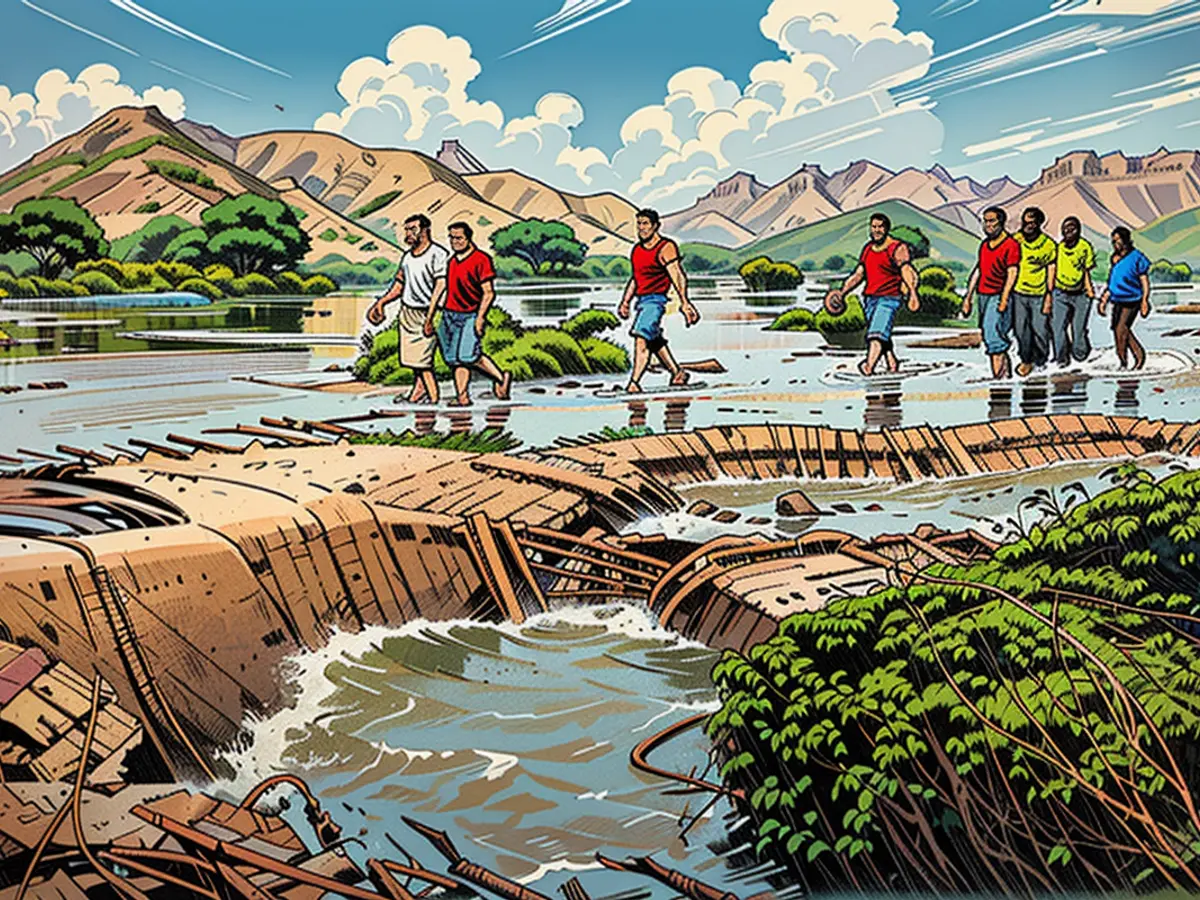Over thirty fatalities reported following the collapse of a dam in Sudan, as declared by a United Nations organization.
Catastrophic floods obliterated 20 settlements and left an additional 50 in shambles after the Arba’at Dam failed on a Sunday, as reported by the United Nations Office for the Coordination of Humanitarian Affairs (OCHA). Estimating a staggering 50,000 people had encountered severe hardships due to the disaster.
In the villages of Khor-Baraka and Tukar, inhabitants were pushed to abandon their homes for safety, as revealed by OCHA, citing local authorities. The death toll might substantially rise, as suggested by OCHA.
Footage captured by Agence France-Presse (AFP) depicts industrial vehicles engulfed in mud and debris, some loaded with containers and personal assets. Other vehicles are scarcely recognizable on the sandy riverbank.
Moussa Mohamad Moussa, a local resident living near the dam, recounted his experience in another AFP video, stating, "The dam burst, and... the water swept away approximately 40 individuals."
"In the region where I originate, the Tabub area... they informed me that all structures and belongings were swept away," he added.
Resident Ali Issa was photographed sharing how he assisted in rescuing families, old people, and children entangled in their vehicles when the floodwaters surged. "We arrived at the site to assess the situation, but we couldn't reach the Arba’at Dam because there was so much water," he explained.
Preliminary assessments suggested that incessant rainfall had prompted the dam to rupture, as disclosed by OCHA, leading to the complete depletion of the reservoir behind it.
The damaged facility served as the primary water supplier to Port Sudan, Sudan's fifth-largest city, which lies about 38 kilometers (23 miles) to the southeast.
OCHA projected that the destruction would exacerbate the humanitarian situation in Red Sea State. Recently, aid organizations have warned Sudan is on the brink of collapse and famine as a consequence of over a year of civil conflict.
Sudan’s Federal Minister of Health, Dr. Haitham Muhammad Ibrahim, pledged emergency humanitarian relief, including provision of essential medicines and medical personnel, during a visit to the region on a Sunday, as announced by his office. He also promised monetary support for evacuation efforts.
On Monday, Sudanese Armed Forces (SAF) chief and head of the Sudanese Transitional Sovereignty Council Abdel Fattah al-Burhan visited Tokhar, a region unaffected by the dam collapse but ravaged by the weekend's storms, as per a council statement. Footage uploaded by the council shows Al-Burhan speaking with residents of the town, roughly 170km south of Arba’at.
The area surrounding the Arba’at Dam has been afflicted by humanitarian issues. The region shelters nearly 240,000 displaced individuals, according to the United Nations International Organization for Migration.
OCHA is collaborating with partners, such as United Nations International Children’s Emergency Fund and WASH Cluster, as well as local officials, to reach communities impacted by the collapse.
In light of the damage, the United Nations International Children's Emergency Fund (UNICEF) and the WASH Cluster, in collaboration with local officials and OCHA, are working diligently to provide aid to the affected communities in Africa. The catastrophic floods have also impacted several regions in Africa, including the Tabub area where Moussa Mohamad Moussa resides.








